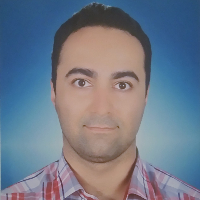Cluster analysis of milk fat yield trait in dairy cows using meta-analysis of the genome-wide association studies
Dairy milk is one of the most important economic products for any country. Also, milk fat has high impact on taste of milk and dairy products. The liver in ruminant animals including dairy cows plays an important role in carbohydrates metabolism, fats, vitamins, hormones, and etc. The absorbed nutrients pass through the liver from the gastrointestinal tract and enter the blood circulation system, and eventually enter the mammary glands of dairy cows. Therefore, the liver plays an essential role in cow lactation and fat production. All components that determine milk quality can be considered as quantitative traits controlled by many genes and influenced by environmental factors. If genetic markers can explain a significant part of the variation, they can be considered as ideal candidates for genomic selection. Previously, microsatellite markers were used to identify quantitative trait locus (QTL). But now, with the progress of science and the advent of the single-nucleotide polymorphisms (SNP) is used in genome-wide association studies (GWAS) to identify QTL. In dairy cows, some of the major genes with significant effects on milk fat have been identified in previous GWAS studies. Therefore, despite a large number of GWAS studies in dairy cows, the studies can be combined using meta-analysis to achieve higher power results. Meta-analysis is a statistical analysis that combines the results of scientific multiple studies. These studies contribute to our current understanding of the genetic regulation of milk fat yield traits. This approach provides a better understanding of the genetic architecture of complex traits. The network clustering algorithm and cluster identification is an important tool in the structural analysis of networks. The many clustering algorithms in different types are used for protein-protein interactions (PPIs) networks analysis. In this study, we used an algorithm known as MCODE to identify dense regions in the PPIs diagram. The overall purpose of PPIs network clustering is to a grouping of genes or proteins that are related according to some scales. The network of PPIs contains different proteins that play a role in different pathways. Because these genes or proteins are clustered based on the similarity of metric and are known as matrix distances. It is also important to predict molecular assemblies of protein interaction data because it provides another level of functional annotation. A total, the purpose of this study is to conduct a meta-analysis of GWAS in cluster analysis to identify genes that are effective in milk fat yield in dairy cows.
In this study, the data used were GWAS summary data. All data were collected from 19 published studies from 2010 to 2019. This research included main papers and dissertation (valid dissertations with published papers). All available genes were combined, synthesized, and evaluated using a meta-analysis method. The Cytoscape v3.7.2 software was used to analyze and visualize the genes examined by the STRING v1.5.0 plugin and to extract clusters from the MCODE v1.5.1 algorithm. Therefore, the results of the GWAS summary data were combined in molecular networks with PPIs, which have a significant role in increasing the association studies power to identify genes affecting milk fat trait. Also, the DAVID server was used to identify the gene ontology (GO) term enrichment in order todetect enriched biological terms associated with genomic regions and to identify gene networks using functional annotation clustering tools based on enriched pathways analysis.
A total, 223 genes were analyzed using the STRING plugin in Cytoscape software. Also, these genes were associated with at least one other gene and had a direct and partial correlation. In the gene network, the correlation created for milk fat yield trait included 213 genes or nodes and 219 edges (gene connection). The P-value calculated in the STRING network was statistically significant for enriched pathways in PPIs ( ).The collection of important genes and popular were evaluated using the MCODE plugin. Seven clusters were identified and grouped in this network. For instance, proteins in cluster 1 included: ARHGAP39, CPSF1, CYHR1, PPP1R16A, GRINA, MROH1, and SMPD5 genes. As shown in Table 2, cluster 1 (score=7) was connected with 7 node density to 21 nodes. This cluster showed proteins that play important roles in the internal space of the endoplasmic reticulum (cellular components), metal ion binding (molecular function), and integral to the membrane (cellular components). CPSF1, CYHR1, and GRINA are major genes involved in the internal space of the endoplasmic reticulum, metal ion binding, and membrane integral, respectively. It was found that clusters 1 and 2 have the highest score between all reported clusters.
The chart-based protein clustering was extracted from the PPIs network using the MCODE algorithm and the enriched pathways were extracted from the DAVID tool. This method determines the quality of the proteins involved in fat yield and helps to understand the molecular structure of proteins. These clusters based on existing biological knowledge can help data mining and system models understand network interactions and pathways. These protein clusters provide a deep insight into how genes interaction with each other in network analysis for fat yield. However, it was observed that meta-analysis of GWAS summary data can play an important role in the wide understanding of network visualization and cluster analysis of identified genes in enriched pathways. Therefore, cluster analysis can improve the identified genes power for economically important traits such as milk fat yield in a population of dairy cows and can be used in future genomic evaluations and breeding programs.
-
Recombinant Glutamate Decarboxylase to Increase Gamma-aminobutyric Acid Production
Hanieh Yarabbi, Sahar Roshanak, Seyed Ali Mortazavi, Masoud Yavarmanesh *,
Research and Innovation in Food Science and Technology, Summer 2024 -
In ovo Inoculation of cLF36 on Post-hatch Performance, Intestinal Histo-morphometry and Microflora of Broiler Chickens Challenged with Clostridium perfringens
Seyed Mohammad Mahdi Sadati, Hassan Kermanshahi *, Mohammad Hadi Sekhavati,
Poultry Science Journal, Summer -Autumn 2024



